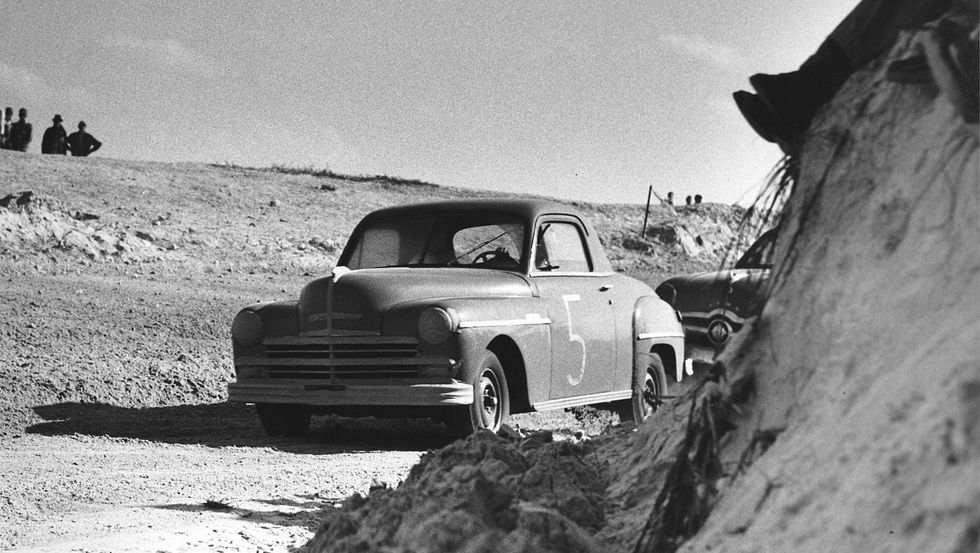It was sublime and ridiculous—at the same time.
Hulking NASCAR stock cars—the mechanical beasts of the 1950s—raced on the Atlantic Ocean sand in Daytona Beach, Fla., made a hard (and rut-filled) left turn onto the asphalt surface of Highway A1A, drove about two miles, then made another hard left to return to the beach.
This was the Daytona beach and road course, and, at about four miles in length, it introduced NASCAR-style racing to coastal Florida. The course was used from 1949 (the Cup Series’ first season) to 1958. NASCAR moved its Daytona Beach races to the new Daytona International Speedway several miles west of the coastline in 1959, and one of auto racing’s unique road courses was no more.
Over its decade of life, the beach-road course produced some wild racing and some wacky circumstances, including cars sliding off into the surf, Junior Johnson taking a crazy flipping ride on the sand and cars stacking up in the tough turns in multi-vehicle accidents.
Some of the greatest photographs in NASCAR’s 75-year history were shot during these races: Cars churning through the ruts of the turns; cars spraying sand and salt rolling down the beach, dozens of cars running side by side by side a few feet from the ocean at the unfurling of the green flag.That was then, and this is now. And the beach-road course is not likely to be revived – but wait. Crazy things are happening. NASCAR has raced—and will race again—on the streets of Chicago, a scenario that would have resulted in the people who proposed it being laughed out of their jobs 10 years ago.
North Wilkesboro Speedway, abandoned to weeds and rust for years, was resuscitated and once again hears the roar of Cup engines.
No one is seriously proposing a return to beach-road course racing, but imagine the spectacle. All things old would be new again.
The landscape obviously is very different 65 years after the last beach race. Development crowds A1A on both sides of the highway, especially on the beachfront. In fact, encroaching development along the beach was the main reason NASCAR founder Bill France Sr. decided the beach-road course had to be replaced.
A massive organizational and logistical effort would be needed to revive the old four-mile course. Beach businesses, including a string of hotels, obviously would be impacted during the days leading to the race and the race itself. The same was true in Chicago, however.
Obviously, there would be numerous issues making the current Cup car model raceable on the beach’s hard-packed sand. But bring back some refurbished 1950s models and put them in the drivers’ hands. Could be fun.
This would be nostalgia multiplied to the highest level.
Problems? Sure. Spinning cars could run into a miniature golf course and damage an artificial dinosaur. Patrons in a topless bar could be disturbed by the noise. Passenger-car traffic, which is allowed on the Daytona beachfront much of the time, obviously would be curtailed.
But, in a time in which all things seem possible in NASCAR’s brave new world, it costs nothing to dream.
Read the full article here



